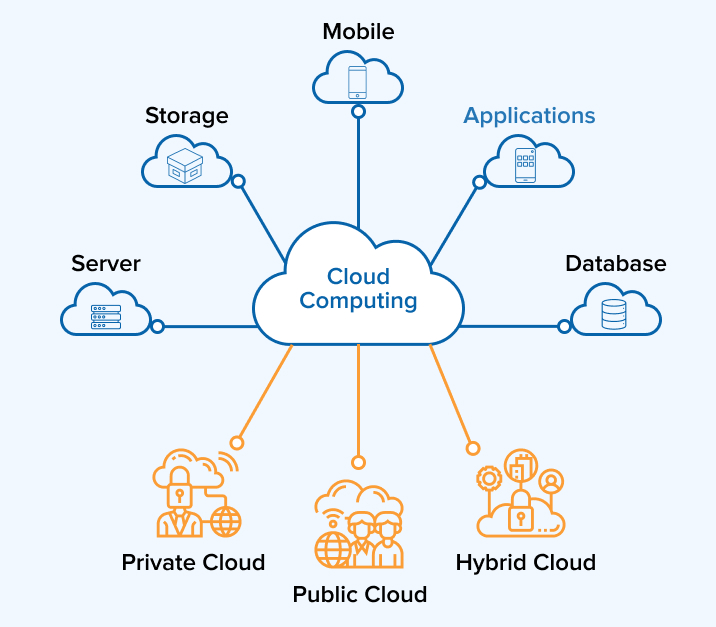Achieve Seamless Scalability With Cloud Solutions
In the ever-evolving landscape of cloud solutions, accomplishing smooth scalability stands as a foundation for modern businesses looking for to remain competitive and versatile. The quest for smooth scalability with cloud services reveals a globe of possibilities for those eager to embrace the transformative power of dynamic source monitoring.
Advantages of Cloud Scalability
Cloud scalability offers organizations the flexibility to dynamically change sources based upon need, making certain ideal efficiency and cost effectiveness. One essential advantage is the capacity to range sources up or down swiftly in feedback to fluctuating workloads. This dexterity makes it possible for organizations to meet altering consumer demands without over-provisioning sources, inevitably leading to cost savings. Scalability likewise boosts efficiency by making certain that systems can deal with boosted web traffic or workload without experiencing downtime or stagnations. By efficiently alloting resources, companies can keep high degrees of efficiency throughout peak times without unneeded expenses during quieter periods. In addition, cloud scalability promotes technology and experimentation by permitting companies to quickly check originalities and range them as required. This flexibility encourages a society of constant improvement and adjustment, enabling companies to remain competitive in a swiftly evolving market landscape. Ultimately, the benefits of cloud scalability extend beyond expense savings to include improved efficiency, agility, and advancement.
Key Functions for Scaling
Reliable scaling in cloud services depends on essential features that make it possible for organizations to readjust sources dynamically based on demand. One important feature for scaling is flexibility, permitting sources to scale up or down in feedback to changing work. This guarantees that organizations can satisfy performance needs without over-provisioning sources. An additional key attribute is scalability, enabling systems to manage increased workload by adding resources flawlessly. This feature is vital for accommodating development without jeopardizing performance. Additionally, automation plays an important function in scaling by automating the provisioning and de-provisioning of resources based upon predefined policies. Automation minimizes human intervention, boosts effectiveness, and guarantees quick response to changing needs. Tracking and analytics tools are likewise important for scaling, offering insights right into resource application, performance metrics, and possible traffic jams. These devices allow organizations to make informed choices and maximize resource allowance for effective scaling. Generally, these key attributes jointly encourage companies to attain smooth scalability in cloud solutions.
Implementing Auto-Scaling Techniques
To properly enhance resource allowance and adapt to differing work, organizations have to tactically implement auto-scaling strategies in their cloud services framework. Auto-scaling allows systems to automatically readjust the variety of compute resources based on real-time need. There are various auto-scaling approaches that organizations can use, such as predictive scaling, which utilizes historical information to anticipate future resource needs, and reactive scaling, which responds to present work adjustments.

Finest Practices for Scalability
For companies aiming to boost their scalability in cloud services, implementing finest techniques is crucial for optimal performance and resource administration. One key finest method is designing applications with a microservices design. This strategy breaks down applications right into smaller sized, independent solutions that can be released, updated, and scaled independently, permitting higher adaptability and scalability.
One more crucial method is making use of containerization innovation, such as Docker or Kubernetes. Containers enable the packaging of applications and their dependences right into isolated units, making it less complicated to scale components separately and release them continually across different atmospheres.
Furthermore, implementing automated deployment and framework as code (IaC) can enhance scalability efforts (linkdaddy cloud services). Automation tools like Terraform or Ansible aid in provisioning and taking care of sources efficiently, minimizing hand-operated mistakes and click this enabling quick scalability
Furthermore, checking performance metrics, establishing informs, and conducting routine capability planning are vital methods to make certain aggressive scalability management. By adhering to these finest techniques, companies can achieve smooth scalability in their cloud solutions while maximizing performance and resource usage.
Monitoring Performance Metrics
When examining the performance of cloud services scalability, carefully checking performance metrics is important for guaranteeing optimal capability and resource allocation. By constantly tracking vital performance indications (KPIs) such as action times, resource, throughput, and latency usage, organizations can acquire useful understandings right into the wellness and performance of their cloud framework. Monitoring efficiency metrics permits for the very early discovery of potential bottlenecks or concerns that could impact scalability, allowing proactive steps to be taken to resolve them before they escalate.

Conclusion
Finally, achieving smooth scalability with cloud services is crucial for companies to optimize performance, boost advancement, and keep high performance degrees during peak times. By leveraging the advantages of cloud scalability, executing auto-scaling techniques, making use of essential functions such as flexibility and automation, and complying with finest practices like application layout and performance surveillance, organizations can successfully scale their systems while making best use of resource usage and efficiency.
The quest for seamless scalability with cloud solutions introduces a world of possibilities for those ready to accept the transformative power of dynamic source management.
Cloud scalability offers organizations the flexibility to dynamically change resources based on demand, ensuring ideal performance and expense performance. Another vital attribute is scalability, allowing systems to take care of enhanced Go Here work by adding resources flawlessly.For organizations intending to boost their scalability in cloud services, implementing best methods is crucial for ideal performance and source administration.When evaluating the efficiency of cloud services scalability, closely monitoring efficiency metrics is crucial for ensuring optimal capability and resource allotment.